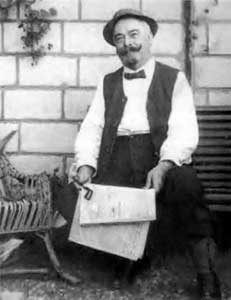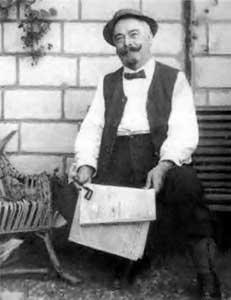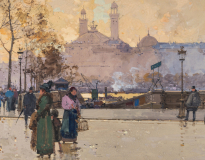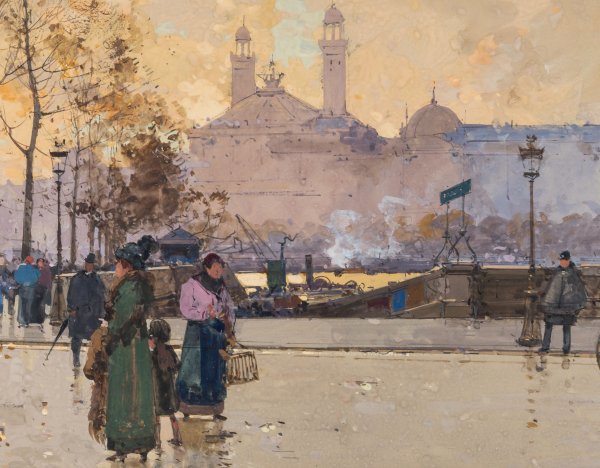Eugène Galien Laloue
( 1854-1941 )
Biography


A French painter and watercolorist, Eugène Galien-Laloue was born in Montmartre on December 11, 1854. The son of stage decorator Charles Laloue, he was introduced at an early age to the art of drawing and perspective within the world of theatrical design. After a youth marked by the Franco-Prussian War of 1870, he devoted himself entirely to painting and, from the 1870s onward, embarked on a prolific career that would make him one of the finest chroniclers of Belle Époque Paris.
Beginning in 1877, he exhibited regularly at the Salon des Artistes Français, where his gouaches and oils depicting the boulevards, quays, and public squares of the capital met with great success. His urban scenes, often bathed in the light of winter or rain, reveal a keen sense of atmosphere and a remarkable attention to everyday life. His compositions combine disciplined draftsmanship, a restrained palette, and a fluid touch, evoking both the vitality of modern life and the poetry of popular Paris.
His work is often executed on a modest scale, favoring spontaneity and precision of detail. Through a palette of silvery grays, soft ochres, and muted blues, Galien-Laloue captures the subtle variations of light reflected on wet cobblestones, bustling sidewalks, and elegant figures. In his views of markets, avenues, and monuments, he creates a true visual chronicle of late-19th-century Paris.
A prolific artist, he also painted under several pseudonyms — E. Galiany, L. Dupuy, J. Liévin, among others — to meet the high demand of dealers and collectors. His work also extends to provincial landscapes, notably of Normandy, Seine-et-Marne, and the Avignon region, where he often stayed.
Galien-Laloue took part in numerous official exhibitions, including the Paris Universal Expositions, and during his lifetime was sought after by both French and international collectors, particularly in Britain and the United States.
Settled in Chérence (Val-d’Oise), he continued to paint until his death on April 18, 1941.
His art, at the crossroads of realism and impressionist sensibility, bears witness to a unique vision of the modern city — that of a painter who was at once an observer, a poet, and a craftsman of everyday life.
93400 Saint-Ouen sur Seine

